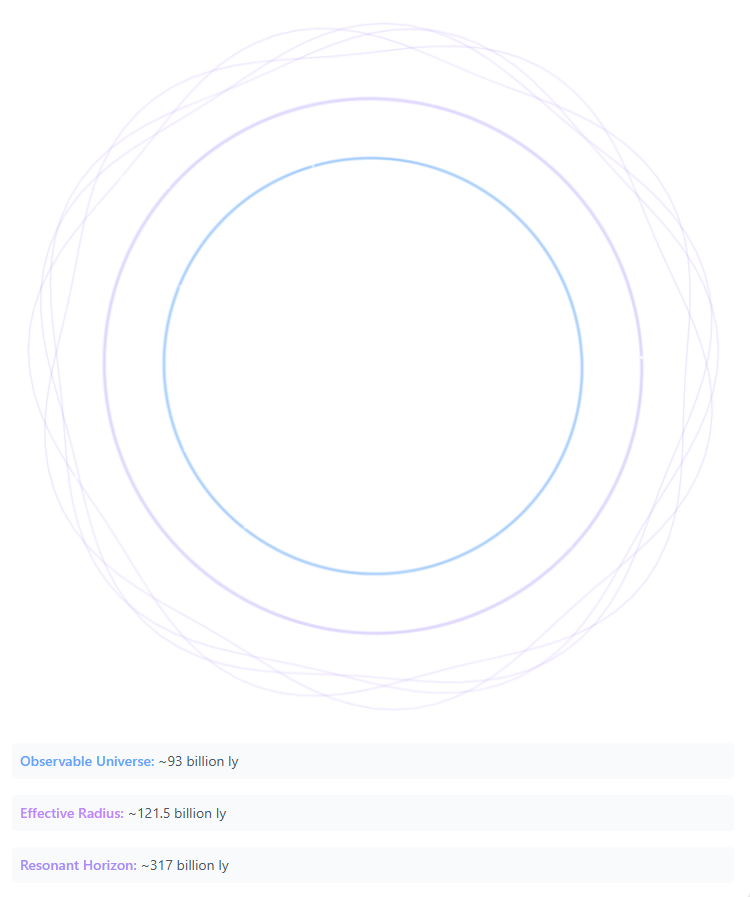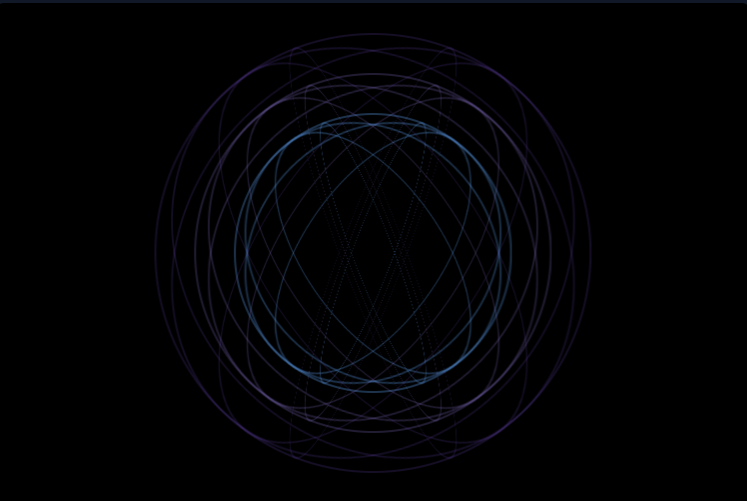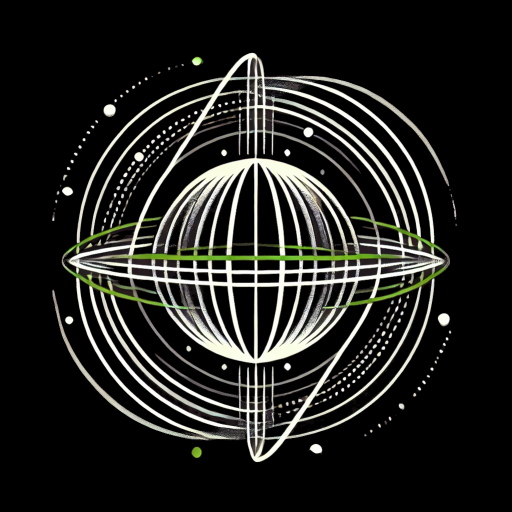Introduction
The quest to understand the true size, shape, and structure of our universe has been one of humanity’s greatest scientific endeavors. Recent theoretical work in Vibrational Field Dynamics (VFD) offers a fascinating new framework for understanding these fundamental aspects of our cosmos. This article explores how VFD theory provides insights into the universe’s structure and boundaries.
The Three Boundaries of the Universe
According to VFD theory, the universe exhibits three distinct boundaries, each playing a crucial role in cosmic structure:
1. The Observable Universe (~93 billion light-years)
- Represents the portion of the universe we can directly observe
- Limited by the speed of light and the age of the universe
- Defines our cosmic horizon based on current observational capabilities
2. The Effective Radius (~121.5 billion light-years)
- Determined by VFD’s resonance-modified curvature
- Represents the effective boundary where standard physical laws begin to show quantum modifications
- Marks the transition zone where resonance effects become significant
3. The Resonant Horizon (~317 billion light-years)
- The theoretical outer boundary where resonance effects become dominant
- Represents the limit where conventional space-time concepts break down
- Defined by VFD’s fundamental resonance function


Understanding VFD’s Resonance Structure
The universe’s structure in VFD theory is governed by a fundamental resonance function:
Rh(ω) = ω₀² [cos(ω₀φⁿ) + ξ·sin²(ω₀φⁿ)]e⁻|ω-ωᵣ|/Γ [1 + (ω/ωc)²]⁻¹This function describes how space-time itself resonates at different scales, creating natural boundaries and influencing cosmic structure.
Key Findings from VFD Theory
Shape
- The universe maintains spherical symmetry at large scales
- Local geometry is modified by resonance effects
- Creates a layered structure with distinct boundaries
Size
- Total volume: ~7.1 × 10³³ cubic light-years
- Effective diameter: ~243 billion light-years
- Significantly larger than the observable universe
Structure
- Nested spherical boundaries
- Resonance-modified local geometry
- Natural transition zones between boundaries
Implications for Cosmology
VFD theory provides several important insights:
- Resolution of Cosmic Puzzles
- Natural explanation for dark energy distribution
- Framework for understanding cosmic expansion
- Potential resolution for cosmological constant problems
- Observable Predictions
- Modified gravitational wave signatures
- Specific patterns in cosmic microwave background
- Distinctive galaxy cluster distributions
- Future Research Directions
- Testing VFD predictions with next-generation telescopes
- Exploring resonance effects in gravitational wave detection
- Investigating boundary effects in cosmic structure formation
Conclusion
Vibrational Field Dynamics offers a compelling new way to understand the universe’s fundamental structure. While further observational evidence is needed to confirm its predictions, the theory provides a mathematically consistent framework that could help resolve several outstanding problems in modern cosmology.
Technical Notes
- The visualizations in this article were created using VFD mathematical models
- All measurements are based on current observational data combined with VFD calculations
- Scale representations are approximate and meant to illustrate relative proportions
References
- Smart, L. (2024). Vibrational Field Dynamics: A Unified Framework for Quantum Gravity and Field Interactions



Leave a Reply